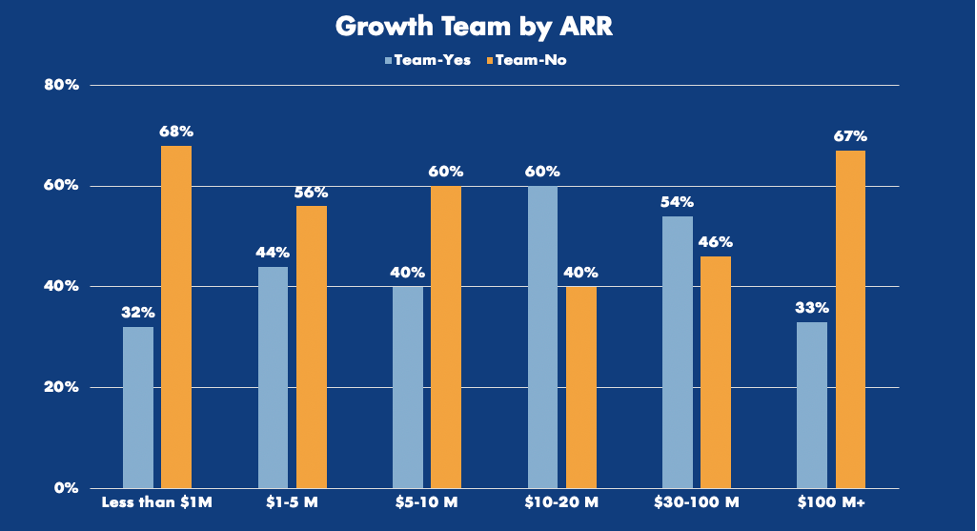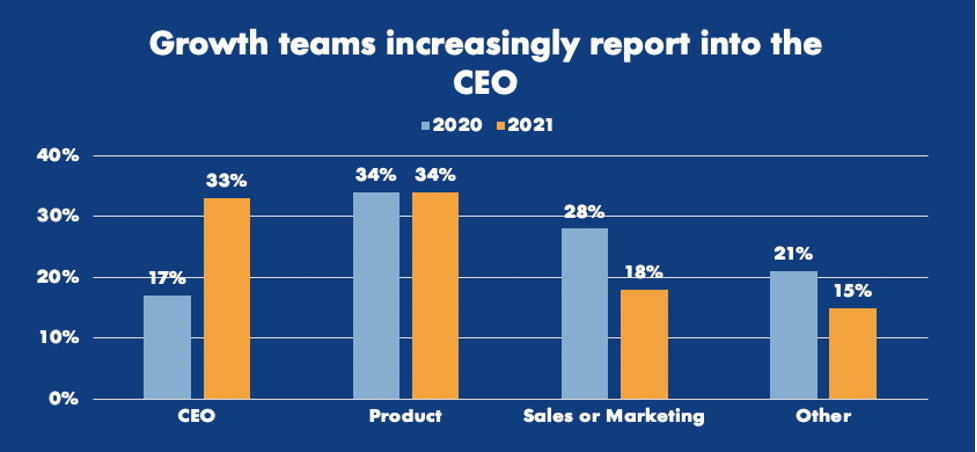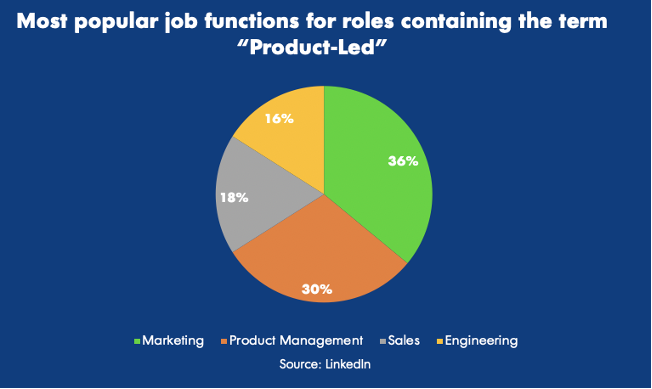Everyone at an organization should own growth, right? Turns out when everyone owns something, no one does. As a result, growth teams can cause an enormous amount of friction in an organization when introduced.
Growth teams are twice as likely to appear among businesses growing their ARR by 100% or more annually. What’s more, they also seem to be more common after product-market fit has been achieved — usually after a company has reached about $5 million to $10 million in revenue.

Image Credits: OpenView Partners
I’m not here to sell you on why you need a growth team, but I will point out that product-led businesses with a growth team see dramatic results — double the median free-to-paid conversion rate.

Image Credits: OpenView Partners
How do you hire an early growth leader?
According to responses from product benchmarks surveys, growth teams have transitioned dramatically from reporting to marketing and sales to reporting directly to the CEO.
Some of the early writing on growth teams says that they can be structured individually as their own standalone team or as a SWAT model, where experts from various other departments in the organization converge on a regular cadence to solve for growth.

Image Credits: OpenView Partners
My experience, and the data I’ve collected from business-user focused software companies, has led me to the conclusion that growth teams in business software should not be structured as “SWAT” teams, with cross-functional leadership coming together to think critically about growth problems facing the business. I find that if problems don’t have a real owner, they’re not going to get solved. Growth issues are no different and are often deprioritized unless it’s someone’s job to think about them.
Becoming product-led isn’t something that happens overnight, and hiring someone will not be a silver bullet for your software.
I put early growth hires into a few simple buckets. You’ve got:
Product-minded growth experts: These folks are all about optimizing the user experience, reducing friction and expanding usage. They’re usually pretty analytical and might have product, data or MarketingOps backgrounds.
Top-of-funnel growth experts: These folks are artists — and sometimes people annoyingly call them “growth hackers.” They think of creative ways to generate virality and consistent discovery. Think: HubSpot’s Sidekick tool or Zapier’s incredible dominance of SEO with their integrations webpages.
Growth strategy experts: These players come in later and work to perfect pricing to optimize for conversion, expansion and retention. They may also function as general managers for launching new product offerings, and they’ll be extremely detail-oriented and organized.
So what about experience? What makes a great senior growth hire? Remember that these business models are still nascent — you’re not likely to find people with more than five years’ experience in “true” growth. They may have started their careers in product, marketing, “growth hacking” or even analytics.
Andrew Capland, a growth expert who has worked at HubSpot, Wistia and Postscript, urges founders to make a midlevel, not executive, growth hire. I personally encourage leaders to hire midlevel employees with the capacity to own growth: A background in experimentation, taking on more than their day-to-day role requires and an appetite for learning.
Hiring someone who doesn’t match a consistent pattern can be difficult for founders who aren’t sure what to look for, so here are some questions that I ask when evaluating talent for the OpenView portfolio:
What are some of the most successful experiments you’ve run? Why? What were the least successful?
This will help you evaluate how a candidate lays out experiments and how they measure success and failure at the same time. Look for rigorous thinking, building consistent frameworks and thinking outside the box when it comes to outcomes.
Show them your existing product funnel and accompanying metrics — ask them where they would focus the majority of their time in order to hit your projected revenue target this year.
A strong growth-minded hire will already have a feel for benchmarks and should be able to identify which growth lever in your customer journey needs the most help. This will help you understand if the candidate has an analytical mindset and can think on a larger scale.
What would kill your current company in the next five years?
This will help you evaluate whether this hire is senior enough to run a team through the next evolution of your company’s strategy — whether it’s moving from $0 million to $1 million in ARR or exceeding that $20 million mark. A great growth leader is always aware of potentially catastrophic outcomes because they’re so keyed into the product’s strategy.
Becoming product-led isn’t something that happens overnight, and hiring someone will not be a silver bullet for your software. But you can ensure that someone on your team is consistently and programmatically thinking about growth, and building a foundation to consistently improve the user journey moving forward.
I’ve got my first growth hire, let the growth begin, right?
Not one of these hires will be a one-and-done deal. The best way to lose a great growth lead is to understaff them. While most offerings that mention product-led growth today have functions that fall into sales and marketing, they’re also accompanied by openings in product management and engineering to turn all of those tests into a reality.

Image Credits: OpenView Partners
The bottom line: Don’t expect a single hire to scratch the growth itch for you. A brilliant hire is going to come up with ideas, but will absolutely need a team to support them, turn them into experiments and then make them a reality.
Now get moving, because the competition already is
Growth openings are at an all-time high, with over one million listings currently on LinkedIn, and another 50,000 posted every 24 hours. If you’re looking to leverage your product as a growth engine, the time to do so is in the past, and every moment now is critical.
